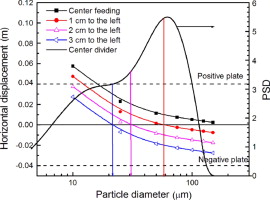- Volumes 84-95 (2024)
-
Volumes 72-83 (2023)
-
Volume 83
Pages 1-258 (December 2023)
-
Volume 82
Pages 1-204 (November 2023)
-
Volume 81
Pages 1-188 (October 2023)
-
Volume 80
Pages 1-202 (September 2023)
-
Volume 79
Pages 1-172 (August 2023)
-
Volume 78
Pages 1-146 (July 2023)
-
Volume 77
Pages 1-152 (June 2023)
-
Volume 76
Pages 1-176 (May 2023)
-
Volume 75
Pages 1-228 (April 2023)
-
Volume 74
Pages 1-200 (March 2023)
-
Volume 73
Pages 1-138 (February 2023)
-
Volume 72
Pages 1-144 (January 2023)
-
Volume 83
-
Volumes 60-71 (2022)
-
Volume 71
Pages 1-108 (December 2022)
-
Volume 70
Pages 1-106 (November 2022)
-
Volume 69
Pages 1-122 (October 2022)
-
Volume 68
Pages 1-124 (September 2022)
-
Volume 67
Pages 1-102 (August 2022)
-
Volume 66
Pages 1-112 (July 2022)
-
Volume 65
Pages 1-138 (June 2022)
-
Volume 64
Pages 1-186 (May 2022)
-
Volume 63
Pages 1-124 (April 2022)
-
Volume 62
Pages 1-104 (March 2022)
-
Volume 61
Pages 1-120 (February 2022)
-
Volume 60
Pages 1-124 (January 2022)
-
Volume 71
- Volumes 54-59 (2021)
- Volumes 48-53 (2020)
- Volumes 42-47 (2019)
- Volumes 36-41 (2018)
- Volumes 30-35 (2017)
- Volumes 24-29 (2016)
- Volumes 18-23 (2015)
- Volumes 12-17 (2014)
- Volume 11 (2013)
- Volume 10 (2012)
- Volume 9 (2011)
- Volume 8 (2010)
- Volume 7 (2009)
- Volume 6 (2008)
- Volume 5 (2007)
- Volume 4 (2006)
- Volume 3 (2005)
- Volume 2 (2004)
- Volume 1 (2003)
► Fly ash beneficiation was systematically investigated in a free falling system.
► Larger particles showed better separation performance.
► Sonification reduced particle size and helped in improving separation efficiency.
► A simplified mechanic model was developed to predict separation efficiency and ash recovery.
A systematic study of fly ash electrostatic beneficiation in a free-falling separation system was carried out to provide fundamental understanding of the separation efficiency for the design of a suitable process for industrial applications. The parameters investigated included feeding position, electric field strength, particle size and moisture content. Particles larger than 105 μm presented the best separation efficiency among four different size fractions, whereas particles smaller than 44 μm showed minimal separation. However, sonication treatments helped separation by liberating more carbon from ash particles, although particle sizes were reduced as well. Experiments also showed that exposure to moisture significantly altered charging behavior of fly ash and its subsequent separation due to more free mobile ion-induced charge exchanges. The optimal feeding position was found to be slightly on the side of the negative electrode, leading to a 30% reduction in loss-on-ignition (LOI) and a 45% recovery in a single pass. A simplified mechanical model based on trajectory analysis for charged particles in an electrical field was in reasonable agreement with experimental results.

